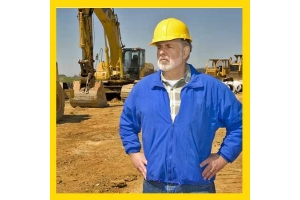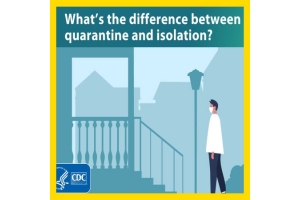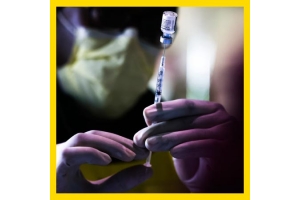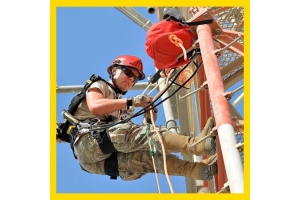Currency
-
January 17, 2021The CDC announced on Jan. 12 that air passengers who are entering the United States must provide a negative COVID-19 test before they can board their flight, according to NPR.
The rule will go into effect on Jan. 26. It arrives in the midst of another surge in coronavirus cases across the country—the death toll from the virus is expected to exceed 400,000 in the next few weeks.
“Testing does not eliminate all risk,” said CDC Director Robert Redfield. “But when combined with a period of staying at home and everyday precautions like wearing masks and social distancing, it can make travel safer, healthier and more responsible by reducing spread on planes, in airports and at destinations.”
Travelers will have to be tested for coronavirus within three days of their departure to the U.S. It is also recommended that passengers get another test administered between three to five days after they arrive in the country.
SOURCE:
-
January 17, 2021What exactly are key performance indicators (KPIs)? And how can they help you and your management team to set realistic goals and enhance performance? These are questions that many organizations are facing in 2020.
These indicators are necessary in any industry – including occupational health and safety. It can be confusing for organizations to navigate, as there are different types of indicators, for example leading and lagging indicators…
So what exactly are leading indicators vs. lagging indicators? Lagging indicators can measure an organization’s current performance and current or long-term trends.
“Most safety professionals are used to the traditional lagging indicators (rear view mirror perspective) like injury rates, claims, etc. However, as important as these are, they don’t give us the fullest picture of what is in front of us (front windshield) and what to do about it.” Says Adrian Bartha, CEO of eCompliance.
“This -
January 17, 2021An innovative national recycling scheme is celebrating more than 10,000 recycled hard hats.
Every year, the UK throws away several million end-of-life protective hats. The National Hard Hat Recycling Scheme is a user-friendly method for old hard hats to bypass traditional waste disposal routes, thereby ensuring end-of-life hats go directly into reprocessing. Three years ago, Yes Recycling built a bespoke recycling capability at its Buckingham shire facility specifically to recycle hard hats.
Although the company is no stranger to innovation when it comes to recycling everyday plastic items – it recycles plastic banknotes, crisp packets, coffee cups and shop hangers – the hard hat recycling presented some particular and unique challenges, not surprising considering hard hats are fundamentally designed to be difficult to destroy.
Nevertheless, engineers were able to overcome this: all hats are completely destroyed by being shred down into -
January 17, 2021Washington — Critics of the Environmental Protection Agency are renewing their call for a complete ban on asbestos after the agency’s release of Part 1 of a final risk evaluation that concludes that the substance – a known human carcinogen – presents an unreasonable health risk to workers under certain conditions.
Used in chlor-alkali production, consumer products, coatings and compounds, plastics, roofing products, and other applications, asbestos is among the first 10 chemicals under evaluation for potential health and environmental risks under the Frank R. Lautenberg Chemical Safety for the 21st Century Act.
Released Dec. 30 and announced via a notice published in the Jan. 4 Federal Register, Part 1 of the final evaluation centers on chrysotile asbestos and states the substance poses unreasonable risk to workers involved in numerous operations, including:
● Processing and industrial use of asbestos diaphragms in the chlor-alkali industry
● Processing -
January 10, 2021Gloves have been around for hundreds, if not thousands, of years.
A recent article from National Geographic reports that utilitarian gloves have been around since Ancient Greece. Indeed, Homer mentions characters wearing gloves to protect from brambles in his epic The Odyssey. National Geographic states that gloves became more common in Medieval times and were certainly worn by workers, with knights and warriors wearing metal gauntlets or chain-mail for battle or blacksmiths wearing leather gloves for smithing.
Gloves have been a constant throughout history, from factory workers in the Industrial Revolution to doctors and surgeons in the late 19th century.
And that’s probably for the best because, in the workplace, hands are among the body parts most at risk of injury. Indeed, workers’ hands face a number of hazards: cuts, abrasions, heat injuries, chemical burns, carpal tunnel syndrome, etc.
According to 2019 statistics from the Workplace Safety -
January 10, 2021But CDC’s critical infrastructure worker guidance is seen limiting infected employees’ return to work.
The Centers for Disease Control and Prevention (CDC) has reduced the amount of time it recommends for employees to stay away from work after they have become exposed to someone who has tested positive for COVID-19.
Up until the CDC’s Dec. 2 announcement, the agency had advised that employers impose a blanket 14-day quarantine for those individuals who came into close contact with other individuals who tested positive or were presumed-positive.
While the agency continues to hold that the original 14-day quarantine period is best after a close contact, the revised guidelines now allow for quarantine periods it deems acceptable, if the individual remains symptom-free.
The new periods are: 10 days after close contact with the positive person; and seven days following close contact if the returning employee has a negative result for a test within -
January 10, 2021Tight-fitting respirators (such as disposable FFP3 masks and reusable half masks) rely on having a good seal with the wearer’s face.
To ensure that respiratory protective equipment (RPE) will protect the wearer:
■ a face fit test should be carried out the first time a worker uses a particular type of respirator
■ the wearer should carry out a pre-use seal check or fit check, which they should repeat every time they put a respirator on
When carrying out a face fit test during the coronavirus (COVID-19) pandemic, testers and wearers should take additional measures to minimize the risk of transmission.
Face fit test
A face fit test should be carried out before people wear RPE for the first time. Inadequate fit can reduce the protection provided and lead to immediate or long-term ill health or can even put the wearer’s -
January 10, 2021A safety program can’t be everything to everyone, but that should still be the goal.
In most organizations, a safety program has many masters. Each silo and function have safety needs that should be addressed. Management wants results that enable the organization to compete and/or benchmark favorably. Legal wants specific rules and procedures to limit liability if serious injuries or damage occur. HR wants clear guidelines for hiring and onboarding new employees, and fair disciplinary policies for violators of safety rules. The safety professional or department wants support from leaders and cooperation from supervisors to reinforce the desired safety behaviors.
Supervisors want clear roles and responsibilities for their contribution to safety and clarity on the priority of safety in relation to productivity. Workers want sufficient training, clear expectations and available assistance in safety when needed. Many organizations have other groups with special needs and -
January 03, 2021The Occupational Safety and Health Administration (OSHA) issued respiratory protection guidance for assisted living, nursing home, and other long-term care facilities. The guidance focuses on the use of respirators while emphasizing a primary reliance upon engineering and administrative controls for controlling exposures, consistent with good industrial hygiene practice and the agency’s traditional adherence to the “hierarchy of controls.”
The industrial hygiene “hierarchy of controls” is a series of workplace safety and health interventions that begins with elimination of hazards, followed by substitution, then engineering controls, administrative controls (including work practices), and personal protective equipment (PPE).
OSHA has instructed its compliance safety and health officers in its area offices to exercise discretion in the enforcement of the respiratory -
January 03, 2021The Advisory Committee for Immunization Practices (ACIP) voted 13-1 on December 1 on the stance that healthcare workers should be the first to receive a COVID-19 vaccination upon approval by the FDA, reports CNN.
Health care workers and residents and staff of long-term care facilities will be included in “Phase 1A” of the CDC’s coronavirus vaccination plan.
“Anybody that works within a health care institution that could have contact with an individual who has Covid should receive vaccination,” said Dr. Jose Romero, chair of ACIP. “That includes individuals such as the persons delivering food, those persons in housekeeping who rapidly turn over rooms in the emergency room or who perform cleaning in the patient’s rooms.”
According to the CDC, over 240,000 health care workers have been infected by COVID-19, while 858 have died of the virus. Efforts to reduce the number









